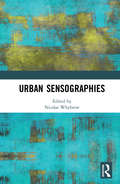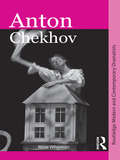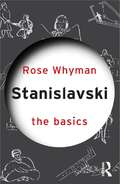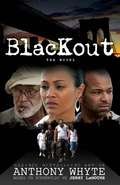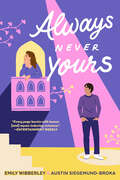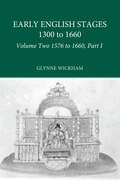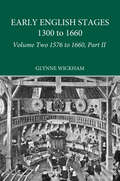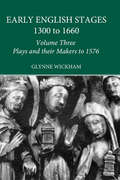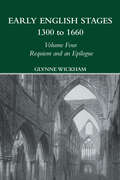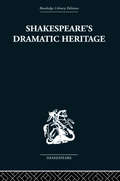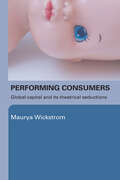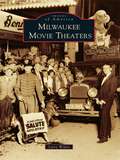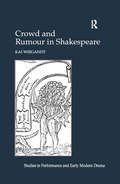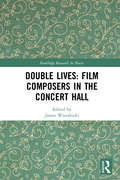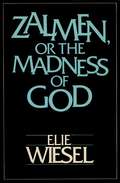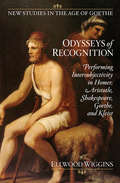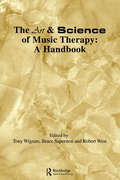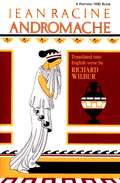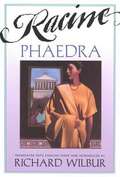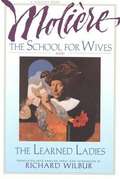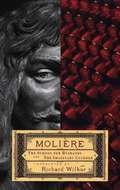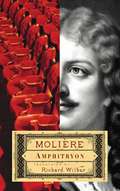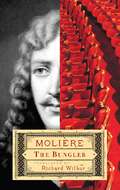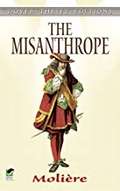- Table View
- List View
Urban Sensographies
by Nicolas WhybrowUrban Sensographies views the human body as a highly nuanced sensor to explore how various performance-based methods can be implemented to gather usable ‘felt data’ about the environment of the city as the basis for creating embodied mappings. The contributors to this fascinating volume seek to draw conclusions about the constitution, character and morphology of urban space as public, habitable and sustainable by monitoring the reactions of the human body as a form of urban sensor. This co-authored book is centrally concerned, as a symptom of the degree to which cities are evolving in the 21st century, to examine the effects of this change on the practices and behaviours of urban dwellers. This takes into account such factors as: defensible, retail and consumer space; legacies of modernist design in the built environment; the effects of surveillance technologies, motorised traffic and smart phone use; the integration of ‘wild’ as well as ‘domesticated’ nature in urban planning and living; and the effects of urban pollution on the earth’s climate. Drawing on three years of funded practical research carried out by a multi-medial team of researchers and artists, this book analyses the presence and movement of the human body in urban space, which is essential reading for academics and practitioners in the fields of dance, film, visual art, sound technology, digital media and performance studies.
Anton Chekhov (Routledge Modern and Contemporary Dramatists)
by Rose WhymanAnton Chekhov offers a critical introduction to the plays and productions of this canonical playwright, examining the genius of Chekhov's writing, theatrical representation and dramatic philosophy. Emphasising Chekhov’s continued relevance and his mastery of the tragicomic, Rose Whyman provides an insightful assessment of his life and work. All of Chekhov’s major dramas are analysed, in addition to his vaudevilles, one-act plays and stories. The works are studied in relation to traditional criticism and more recent theoretical and cultural standpoints, including cultural materialism, philosophy and gender studies. Analysis of key historical and recent productions, display the development of the drama, as well as the playwright’s continued appeal. Anton Chekhov provides readers with an accessible comparative study of the relationship between Chekhov's life, work and ideological thought.
Stanislavski: The Basics (The Basics)
by Rose WhymanStanislavski: The Basics is an engaging introduction to the life, thought and impact of Konstantin Stanislavski. Regarded by many as a great innovator of twentieth century theatre, this book examines Stanislavski's: life and the context of his writings major works in English translation ideas in practical contexts impact on modern theatre With further reading throughout, a glossary of terms and a comprehensive chronology, this text makes the ideas and theories of Stanislavski available to an undergraduate audience.
Blackout
by Anthony Whyte Jerry LamotheIt's August, 2003. All of the Northeast is sweltering, but no place is hotter than Brooklyn, especially the gritty neighborhood known as East Flatbush. Then, in the midst of the heat wave, the unthinkable happens: the power goes out. And stays out. And the longer it's out, the edgier people get, until finally, edginess gives way to anger. For 48 hours, the community is in chaos. Looters are everywhere. No one is safe. Violence erupts suddenly, randomly, scarring the innocents as well as the agitators, until Flatbush finally explodes into deadly conflict. Based on actual events that occurred during the Northeast Blackout of August 14-15, 2003, this riveting novel tells the little-known story of a neighborhood thrown not only into darkness, but utter mayhem. Illustrated throughout with scenes from the film, Blackout is a heart-stopping, page-turning drama that keeps readers unable to put it down.
Always Never Yours
by Emily Wibberley Austin Siegemund-Broka“An utterly charming story of love, family, heartbreak, and drama. I absolutely loved it!”—Morgan Matson, New York Times bestselling author of Since You’ve Been GoneMegan Harper is the girl before. All her exes find their one true love right after dating her. It's not a curse or anything, it's just the way things are. and Megan refuses to waste time feeling sorry for herself. Instead, she focuses on pursuing her next fling, directing theater, and fulfilling her dream school's acting requirement in the smallest role possible. But her plans quickly crumble when she's cast as none other than Juliet--yes, that Juliet--in her high school's production. It's a nightmare. No--a disaster. Megan's not an actress and she's certainly not a Juliet. Then she meets Owen Okita, an aspiring playwright who agrees to help Megan catch the eye of a sexy stagehand in exchange for help writing his new script. Between rehearsals and contending with her divided family, Megan begins to notice Owen--thoughtful, unconventional, and utterly unlike her exes, and wonders: shouldn't a girl get to play the lead in her own love story?
Part I - Early English Stages 1576-1600
by Glynne WickhamThis volume forms part of the 5 volume set Early English Stages 1300-1660. This set examines the history of the development of dramatic spectacle and stage convention in England from the beginning of the fourteenth century to 1660.
Part II - Early English Stages 1576-1600
by Glynne WickhamThis volume forms part of the 5 volume set Early English Stages 1300-1660. This set examines the history of the development of dramatic spectacle and stage convention in England from the beginning of the fourteenth century to 1660.
Plays and their Makers up to 1576
by Glynne WickhamThis volume forms part of the 5 volume set Early English Stages 1300-1660. This set examines the history of the development of dramatic spectacle and stage convention in England from the beginning of the fourteenth century to 1660.
Requiem and an Epilogue
by Glynne WickhamFirst published in 2002.This volume forms part of the 5 volume set Early English Stages 1300-1660. This set examines the history of the development of dramatic spectacle and stage convention in England from the beginning of the fourteenth century to 1660.
Shakespeare's Dramatic Heritage: Collected Studies in Mediaeval, Tudor and Shakespearean Drama
by Glynne WickhamShakespeare's Dramatic Heritage shows that the drama of Elizabethan and Jacobean England is deeply indebted to the religious drama of the Middle Ages and represents a climax, in secular guise, to mediaeval experiment and achievement rather than a new beginning. This is fully examined in terms of dramatic literature as well as in terms of theatres, stages and production conventions. The plays studied include: Richard II, A Midsummer Night's Dream, Hamlet, Macbeth, Coriolanus, The Winter's Tale and Marlowe's King Edward II.
Performing Consumers: Global Capital and its Theatrical Seductions
by Maurya WickstromPerforming Consumers is an exploration of the way in which brands insinuate themselves into the lives of ordinary people who encounter them at branded superstores. Looking at our performative desire to ‘try on’ otherness, Maurya Wickstrom employs five American brandscapes to serve as case studies: Ralph Lauren; Niketown; American Girl Place; Disney store and The Lion King; and The Forum Shops at Caesar’s Palace in Las Vegas. In this post-product era, each builds for the performer/consumer an intensely pleasurable, somatic experience of merging into the brand and reappearing as the brand, or the brand’s fictional meanings. To understand this embodiment as the way that capital is producing subjectivity as an aspect of itself, Wickstrom casts a wide net, drawing on: the history of capital’s relationship with theatre political developments in the United States recent work in political science, philosophy, and performance studies. An adventurous study of theatrical indeterminancy and material culture, Performing Consumers brilliantly takes corporate culture to task.
Milwaukee Movie Theaters: A Pictorial History Of Milwaukee's Movie Theaters (Images of America)
by Larry WidenPrior to World War II, there were 90 single-screen movie theaters in Milwaukee. By 1960, that number had been reduced by half. With the arrival of television for the home market, the golden age of the movie theater in Milwaukee was dead. Yet their ghosts continue to haunt the old neighborhoods. Churches, warehouses, stores, nightspots, and other businesses now occupy the former Tivoli, Paris, Roosevelt, and Savoy Buildings. Others are simply vacant hulks, decaying from the inside out. The Elite, Regent, Lincoln, and Warner are but a few of the many silent sentinels from the days when Milwaukee was in love with the movies.
Crowd and Rumour in Shakespeare (Studies in Performance and Early Modern Drama)
by Kai WiegandtIn this study, the author offers new interpretations of Shakespeare's works in the context of two major contemporary notions of collectivity: the crowd and rumour. The plays illustrate that rumour and crowd are mutually dependent; they also betray a fascination with the fact that crowd and rumour make individuality disappear. Shakespeare dramatizes these mechanisms, relating the crowd to class conflict, to rhetoric, to the theatre and to the organization of the state; and linking rumour to fear, to fame and to philosophical doubt. Paying attention to all levels of collectivity, Wiegandt emphasizes the close relationship between the crowd onstage and the Elizabethan audience. He argues that there was a significant - and sometimes precarious - metatheatrical blurring between the crowd on the stage and the crowd around the stage in performances of crowd scenes. The book's focus on crowd and rumour provides fresh insights on the central problems of some of Shakespeare's most contentiously debated plays, and offers an alternative to the dominant tradition of celebrating Shakespeare as the origin of modern individualism.
Double Lives: Film Composers in the Concert Hall (Routledge Research in Music)
by James WierzbickiDouble Lives: Film Composers in the Concert Hall is a collection of fifteen essays dealing with ‘iconic’ film composers who, perhaps to the surprise of many fans of film music, nevertheless maintained lifelong careers as composers for the concert hall. Featured composers include Erich Wolfgang Korngold, Franz Waxman, Miklós Rózsa, Bernard Herrmann, Nino Rota, Leonard Rosenman, and Ennio Morricone. Progressing in chronological order, the chapters offer accounts of the various composers’ concert-hall careers and descriptions of their concert-hall styles. Each chapter compares the composer’s music for films with his or her music for the concert hall, and speculates as to how music in one arena might have affected music in the other. For each composer discussed in the book, complete filmographies and complete works lists are included as appendices. Double Lives: Film Composers in the Concert Hall is accessible for scholars, researchers, and general readers with an interest in film music and concert music.
Zalman or the Madness of God
by Elie WieselAn interesting study of a rabbi's struggle against religious persecution in post-Stalin Russia.
Odysseys of Recognition: Performing Intersubjectivity in Homer, Aristotle, Shakespeare, Goethe, and Kleist (New Studies in the Age of Goethe)
by Ellwood WigginsLiterary recognition is a technical term for a climactic plot device. Odysseys of Recognition claims that interpersonal recognition is constituted by performance, and brings performance theory into dialogue with poetics, politics, and philosophy. By observing Odysseus figures from Homer to Kleist, Ellwood Wiggins offers an alternative to conventional intellectual histories that situate the invention of the interior self in modernity. Through strategic readings of Aristotle, this elegantly written, innovative study recovers an understanding of interpersonal recognition that has become strange and counterintuitive. Penelope in Homer’s Odyssey offers a model for agency in ethical knowledge that has a lot to teach us today. Early modern and eighteenth-century characters, meanwhile, discover themselves not deep within an impenetrable self, but in the interpersonal space between people in the world. Recognition, Wiggins contends, is the moment in which epistemology and ethics coincide: in which what we know becomes manifest in what we do. Published by Bucknell University Press. Distributed worldwide by Rutgers University Press.
Art & Science of Music Therapy: A Handbook
by Tony Wigram Robert West Bruce SaperstonFirst Published in 1995. Routledge is an imprint of Taylor & Francis, an informa company.
Andromache, by Racine
by Richard WilburA skillful translation of the classical French tragedy about the captivity of Hector's wife after her abduction by the son of Achilles. The rhymed couplets retain the simplicity of form and powerful language of the original. "[This translation] is a striking tour de force" (Hudson Review). Drawings by Igor Tulipanov.
Phaedra, by Racine
by Richard WilburPhaedra is consumed with passion for Hippolytus, her stepson. Believing her husband dead, she confesses her love to him and is rebuffed. When her husband returns alive, Phaedra convinces him that it was Hippolytus who attempted to seduce her. In his interpretation, Racine replaced the stylized tragedy with human-scale characters and actions. Introduction by Richard Wilbur.
The School for Wives and The Learned Ladies, by Moliere
by Richard WilburThe School for Wives concerns an insecure man who contrives to show the world how to rig an infallible alliance by marrying the perfect bride; The Learned Ladies centers on the domestic calamities wrought by a domineering woman upon her husband, children, and household. "Wilbur...makes Molière into as great an English verse playwright as he was a French one" (John Simon, New York). Introductions by Richard Wilbur.
School for Husbands and The Imaginary Cuckold, or Sganarelle
by Richard Wilbur Jean Baptiste De Moliere"My notion of translation is that you try to bring it back alive. . . . If you take on a text which is somehow appropriate to you and which you may already love, what you want to do is to be as perfectly the slave of it as you can be."--Richard WilburOriginally inspired by a revelatory Comédie-Française production of The Misanthrope in 1948 Paris, Richard Wilbur has made translating Molière part of his lifework. These two comedies of marriage and misunderstanding are gathered here in a single volume that is part of TCG's new series (with design by Chip Kidd) to complete trade publication of these vital theatrical works.
Amphitryon
by Richard Wilbur Molière"Richard Wilbur's translations of classic French drama are among the undiscovered treasure of our recent literature."-The Hudson ReviewMolière's late, elegant comedy, based on Plautus' Roman version, alludes to the love affairs of the French king. This is the fourth and final volume of Theatre Communication Group's series (with cover designs by Chip Kidd), completing trade publication of these vital theatrical works. ncludes Richard Wilbur's translation notes.Richard Wilbur is a two-time winner of the Pulitzer Prize, and a former poet laureate of the United States. His verse translations of Molière's plays have been performed for audiences throughout the world.
The Bungler
by Richard Wilbur Molière"A mischievous new translation by the poet Richard Wilbur, [The Bungler] is great good fun and should open the gate for the play to be presented with the regularity it deserves."--Bruce Weber, The New York Times"My notion of translation is that you try to bring it back alive. Speak-ability is so important. . . . I came to see that a line that simply says 'I love you,' at the right point in the show, is entirely adequate, that a great deal of verbal sophistication is not necessarily called for."--Richard WilburPoet Richard Wilbur's translations of Molière's plays are loved, renowned, and performed throughout the world. This volume is part of Theater Communications Group's new series (with cover designs by Chip Kidd) to complete trade publication of these vital works of French neoclassical comedy. The Bungler is Molière's first recognizably great play, and the first to be written in verse. The charming farce is set in Sicily and born of the great Italian tradition of the commedia dell'arte: Loyal valet Mascarille schemes to win the lovely Celie away from rival Leadre, and into the arms of his master Leslie. Molière himself originated the role Mascarille, self-described as "the rashest fool on earth," who naturally bungles the job along the way.Richard Wilbur is a two-time Pulitzer Prize winner and a former Poet Laureate of the United States. His publications include six volumes of poetry and two collections of selected verses, a collection of prose, and two books for children.
The Misanthrope
by Richard Wilbur MolièreMolière understood profoundly what makes us noble, pathetic, outrageous and funny, and in his splendid comedies satirized human folly to perfection. One of the best of his plays — and one of the greatest of all comedies — is The Misanthrope, first performed in 1666, when the King of France himself had assumed patronage of Molière's company, and the actor/playwright was at the height of his career. Spotlighting the absurdities of social and literary pretension, The Misanthrope shows us a man who is quick to criticize the hypocrisies, inconsistencies and faults of others, yet remains blind to his own. As "the misanthrope" grows more and more irritable with others, the play becomes more and more entertaining, even as a happy ending for the hero seems less and less likely.
The Mode in Costume: A Historical Survey With 202 Plates (Dover Fashion and Costumes Series)
by R. Turner WilcoxThe pursuit of style has prompted centuries of dramatic change in fashion—and author R. Turner Wilcox researched and documented it all in this completely comprehensive volume. <p><p>A lifelong student of history, costume, and design, she observed decades of fashion innovations from major cities all over the world and served as fashion editor of Women's Wear Daily from 1910 to 1915. Her remarkable Mode series is a definitive reference for anyone with a passion for fashion. From the togas of ancient Rome to the gorgeous gowns of Dior, this lavishly illustrated, thoroughly researched treasury examines men's, women's, and children's clothing — plus accessories — from 3000 B.C. to 1958. <p><p>Based on medals, coins, sculpture, and decorations of various periods, the images include ancient Egyptian tunics, Chinese silks, Greek sandals, Roman bridal gowns, Persian parasols and fans, Victorian top hats and cravats, Renaissance lace, Venetian breeches, crinolines and bustles, fedoras and homburgs, as well as perfumes, hairstyles, and handbags. <p><p>A gathering of some of the most distinctive and dramatic styles through the ages, The Mode in Costume is an essential handbook for illustrators, costume designers, and theater students — and compulsory reading for fashionistas.
